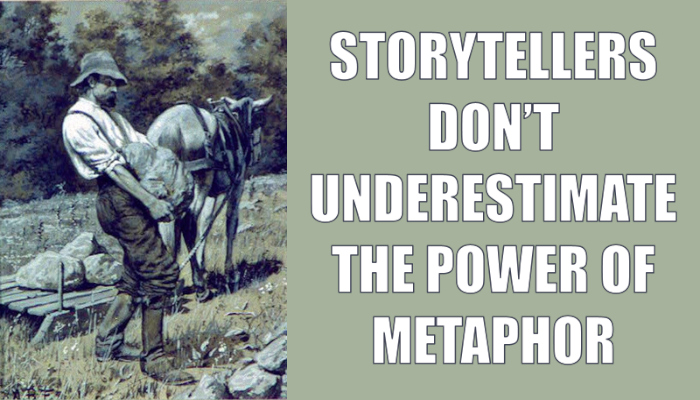
This is the first of a multi-part series on metaphor
Metaphor. It’s both misunderstood and underappreciated. And while most people have an elementary understanding of it–the act of describing one thing in terms of something else–they stop there, failing to recognize the role it plays in human thought, understanding, and communications. Therefore, it’s time to give metaphor the respect that it deserves.
Metaphor comes from the Greek words metaphora (a transfer) and metapherein (to transfer). So, rather than describing one thing in terms of another, metaphors transfer the properties of one thing to another.
We learn new properties everyday. For example, have you ever picked up a stone, stubbed your toe on one, or used one to hold a stack of paper napkins from flying away in the breeze? Each of these experiences helps us ascribe new properties to stones. Over the years we’ve learned that stones are heavy and hard. They retain heat, which makes them useful for stone-fired ovens. Big stones are difficult to move, but once they get rolling, they’re difficult to stop. Stones sink in water, but when thrown at precisely the right angle, they can skip multiple times across a pond. Humans have applied stone properties to hammer tent stakes, add ballast to ships, and construct stone buildings.
If metaphor is the root of all human understanding, then properties are the roots of all metaphors. Those who want to share a new idea, make a point, or teach a new concept must first figure out how to transfer the universally-known properties of one thing to something else.
For example, if you wanted to describe your friend’s emotional strength, you might say something like, “Meghan’s a rock.” Of course, you aren’t establishing an equivalence between Meghan and a rock, but rather, you’re transferring properties of rocks (strength and solidness) to represent her fortitude.
There’s also something special to note with respect to this idea of equivalence and transfer. Property transfers only go in one direction. For example:
We can interchange the following statements as equivalent: twelve is a dozen | A dozen is twelve, but, we can’t do the same with: Meghan is a rock | A rock is Meghan.
The former defines two things as equivalent. The latter transfers properties from an inanimate object to a person.
Metaphor is much more than a creative writing technique. It’s the bedrock of all human understanding. We’ll continue to dive deeper over a series of upcoming posts.
Photo Credit: Frost, A. B. , Artist. Man Unloading Stones from Sledge. , None. [Between 1870 and 1928] Photograph. https://www.loc.gov/item/2010715887/